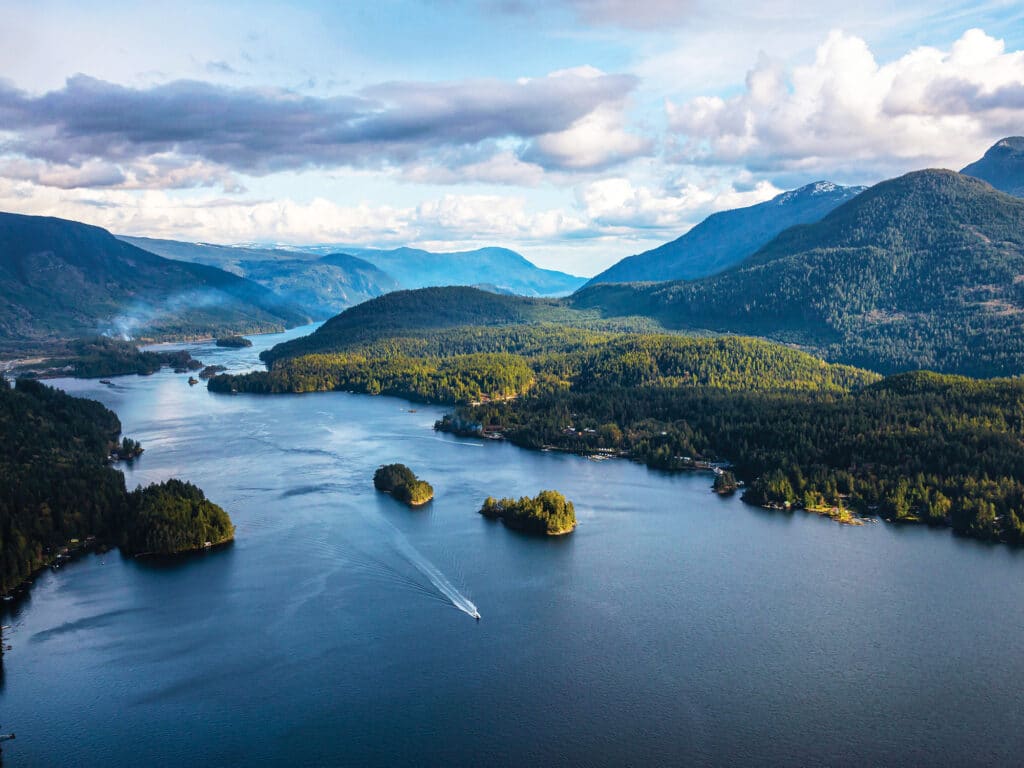
We were cruising through one of Desolation Sound’s towering fjords when the wind hit 35 knots. This type of a headwind is to be expected in this part of British Columbia, and it made me glad that I was—for the first time in my life—exploring a region not aboard a sailboat but instead aboard a 53-foot Grand Banks trawler with twin 650 hp engines. The term “powering through” took on a whole new meaning.
I’ve enjoyed more than a few sailing adventures in my lifetime—not just racing America’s Cup boats, but also on expeditions to remote places including Antarctica, Cape Horn, Sable Island (off Nova Scotia) and Norway’s Svalbard. I’ve completed trans-Atlantic crossings on sailboats too. Now in my 70s, I decided to try a trawler charter with NW Explorations, which is based in Bellingham, Washington. Our crew included my wife, Janice, who has cruised extensively in Maine and on the Chesapeake; longtime friends David and Christy Elwell, from Florida, who had cruised this area twice before this trip; and Kitty Mountain, also from Florida, but a veteran Desolation Sound cruiser. We were all of similar age, and we all had experienced our share of health issues in recent years. Somehow, letting a reputable charter company do most of the planning and make sure the boat was in good working order seemed like a reasonable compromise this time around.
It’s hard to keep me away from a helm, and I particularly enjoyed the solitude of many hours spent running the trawler from the upper deck. The views are fantastic from this perch, with the mountains along Desolation Sound rising 5,000 feet straight up out of the water. I thought about how, when the wind was exceedingly light, it would have been difficult to make progress under sail. Instead, we cruised onward at 9 knots, burning 6 gallons of fuel per hour. There was no hurry. We were having too much fun.
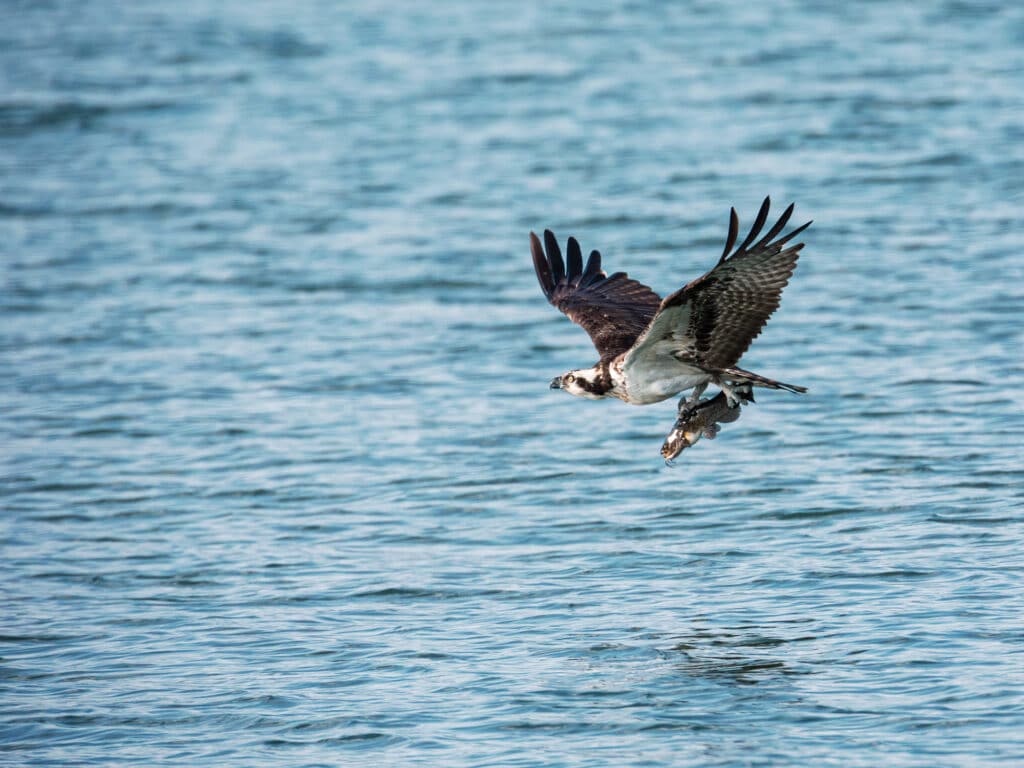
Desolation Sound is surprising in so many ways. Often, we would find a suitable cove to anchor, only to discover that the depth next to the shore was 600 feet. We’d have to look elsewhere or tie up to a few trees or rocks. And although the water was deep, it was surprisingly warm during our September cruise. The water was also, often, ours alone, with few other boats around.
It’s counterintuitive that it could be so (relatively) easy to get to a place so remote, but that’s precisely what the five of us—a perfect-size crew for a trawler this size—had done. We had picked up the boat from the charter base in Bellingham and then cruised over to Port Sidney, Canada, to complete the immigration and customs process for Canada. The New York Yacht Club had organized a few rendezvous of which we took advantage (it’s always fun to compare notes with the crews aboard other yachts), and we were far from the only out-of-towners who were awestruck by the scenery.
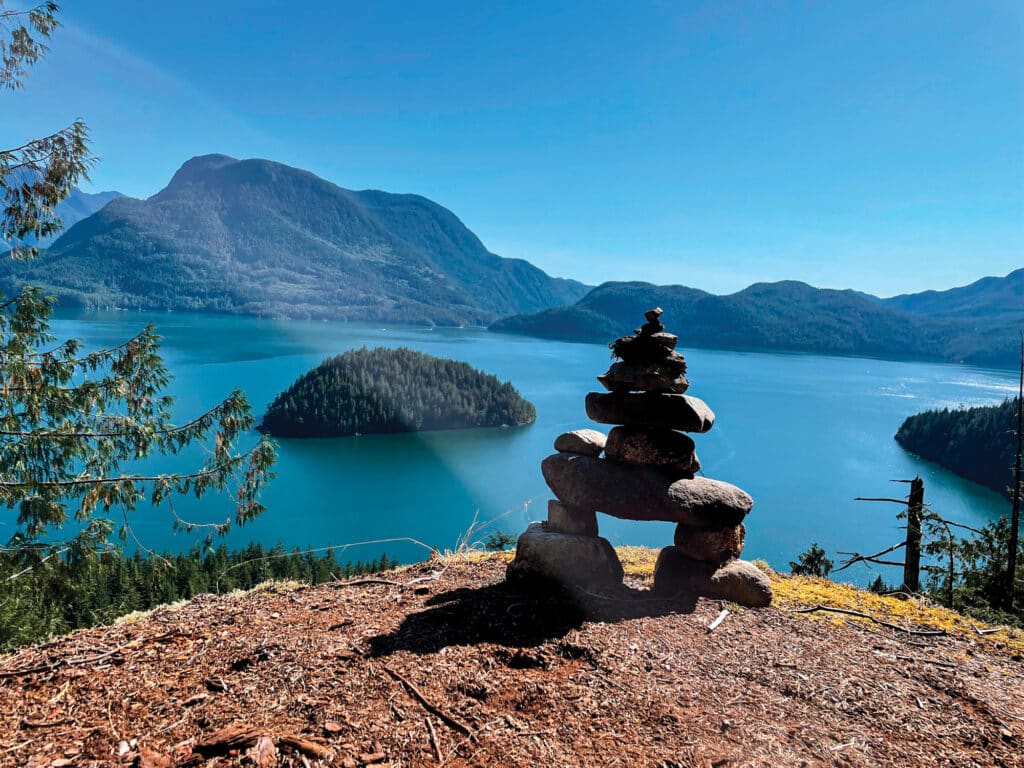
Desolation Sound’s remoteness also gave us a liberating break from internet and cellphone service. We stayed busy with hikes, reading, and in-depth conversations about world affairs, the economy, and our grandchildren. We played spirited nightly games, took occasional naps, and focused on some of my favorite things: navigating and steering. The boat had an autopilot, but I like having my hands on the wheel and my eyes all around. Every few miles, an interesting sight or object would appear: a pod of whales, tidal rips, the ever-changing shoreline. The farther north we sailed, away from the impressive waterfront homes of Vancouver and the San Juan Islands, the more remote the scenery got.
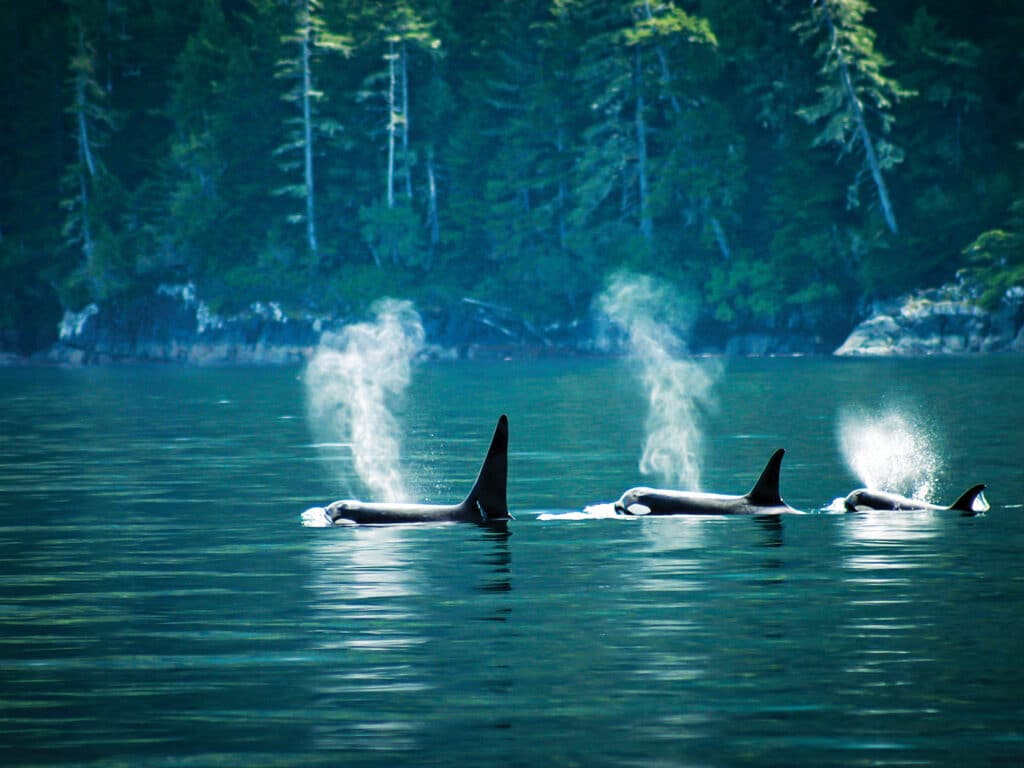
After we anchored each afternoon, we enjoyed dinghy trips where we found all kinds of nifty things. We poked our bow into small coves, intriguing creeks, marshes and lagoons. We went ashore and worked our way through thick brush. Climbing was hard work, as was walking along the rocky coastline. We never saw bears or cougars, but we did see fascinating birds in the skies. The osprey clutches a fish with its face into the wind, making flight easier. Who knew?
Two cruising guidebooks were particularly helpful: Desolation Sound & the Discovery Islands by Anne and Laurence Yeadon-Jones, and Cruising Guide to British Columbia Vol. 2: Desolation Sound and the Discovery Islands by Bill Wolferstan. As a rule, the authors caution mariners to be mindful of tidal rip currents between islands. They’re correct. A few times, it was nice to be able to power up the engines and motor through passages that would have been challenging under sail. All kinds of boaters embrace the challenge, though; we encountered several flotillas of kayaks, including on one of the windy, rainy, chilly days. They waved happily as we steamed past.
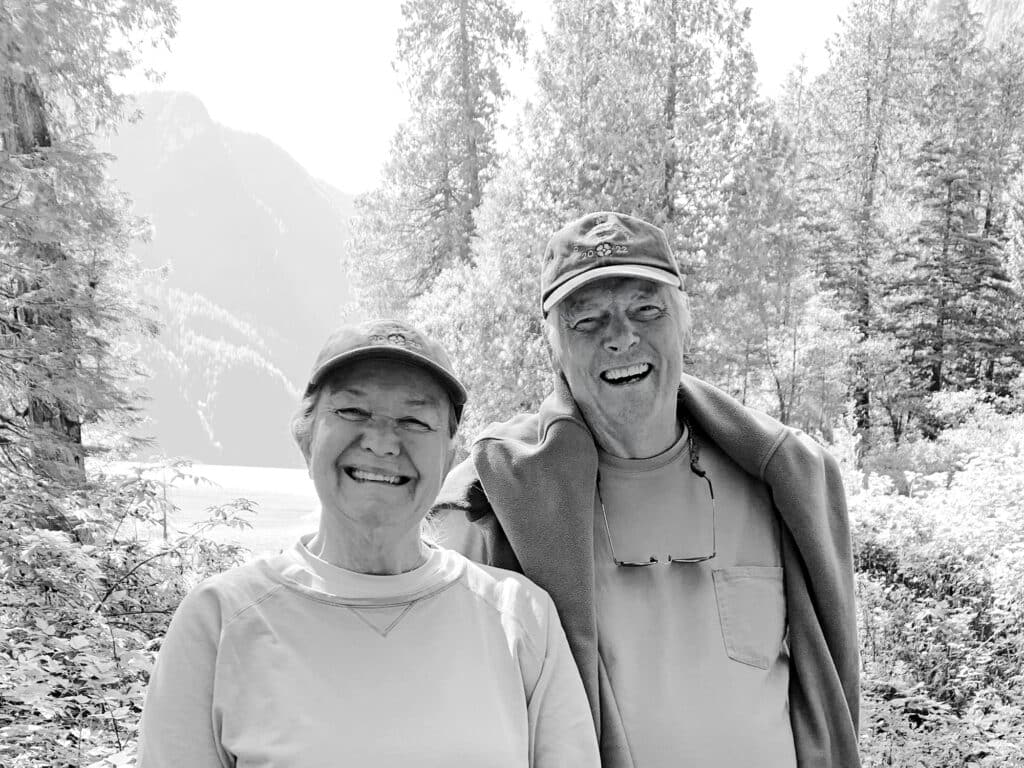
I enjoyed Prideaux Haven, a scenic, protected cove that’s crowded during the summer months but had just eight boats scattered around on the day we arrived. The entrance is narrow and shallow, with Mount Denman off in the distance at about 6,500 feet high. For a (brief) minute, I thought we should attempt to scale the peak. The tidal range was about 18 feet, which meant anchoring with care. In one cove, we looked for the remains of an indigenous peoples’ village. We found only rocks, shells and sand, but it was fun to look around.
A few times, it was nice to be able to power up the engines and motor through passages that would have been challenging under sail.
At other spots, we encountered the fishing and logging industries that dominate this region. Signs ask mariners to reduce speed when passing the fish traps and working zones. On Toba Inlet, we watched a ground crew cut trees while a helicopter hovered over the trunks and grasped them with a heavy-duty clamp. At times, two or three trunks were hoisted together. They were moving 60 to 80 trunks per hour.
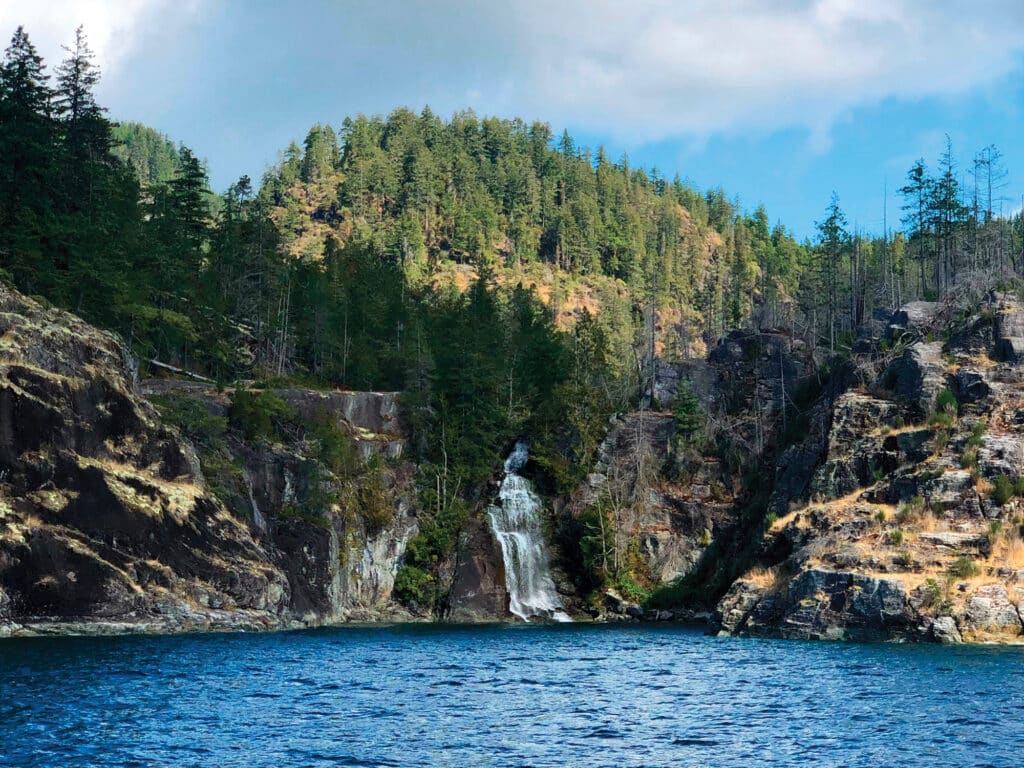
We followed the advice of the guidebooks at the Yuculta Rapids, a stretch of water with fast-moving currents at the northern end of Desolation Sound. The books strongly suggest transiting during periods of slack water; we experienced fierce rapids about one hour after slack water. Whirlpools, steep and choppy waves, and overfalls were evident as we motored through. Dent Island had a seating area where you could watch the churning rapids. We had a great dinner there, and, the next morning, a full breakfast before continuing on our expedition.
I had to smile at some of the waterway names. Two of my favorites were the Hole in the Wall passage, which is a small opening connecting the Okisollo Channel to the Calm Channel, and the One and Only Inlet.
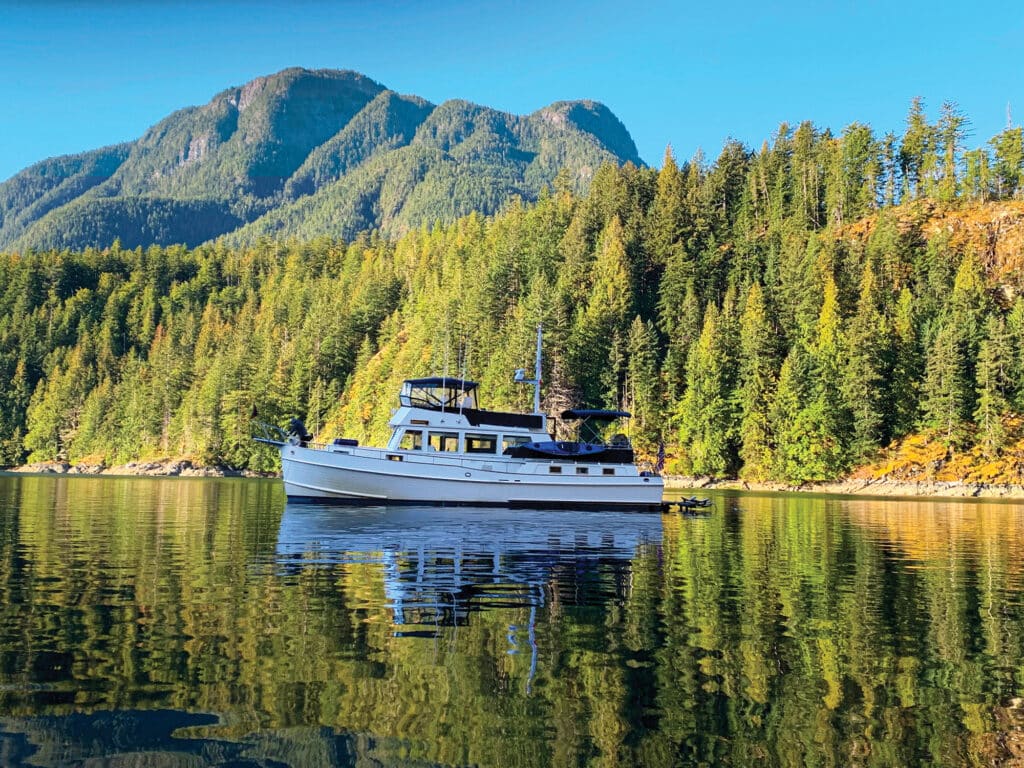
Along the Toba Inlet, we found ancient images of land animals and a sea serpent painted on the shoreline rocks. Equally as mesmerizing was a nearby 150-foot waterfall near picnic benches. One scene was more spectacular than the next.
At one small general store, I found candy bars. My plan was to have one treat per day. The next afternoon, behind the wheel, I was enjoying my 3 Musketeers when the rest of the crew started asking, “Where’s mine?” I took some heat for the next few days, until we came across another general store where I was able to secure a larger supply, along with Raisin Bran cereal for one of our crew who loves it.
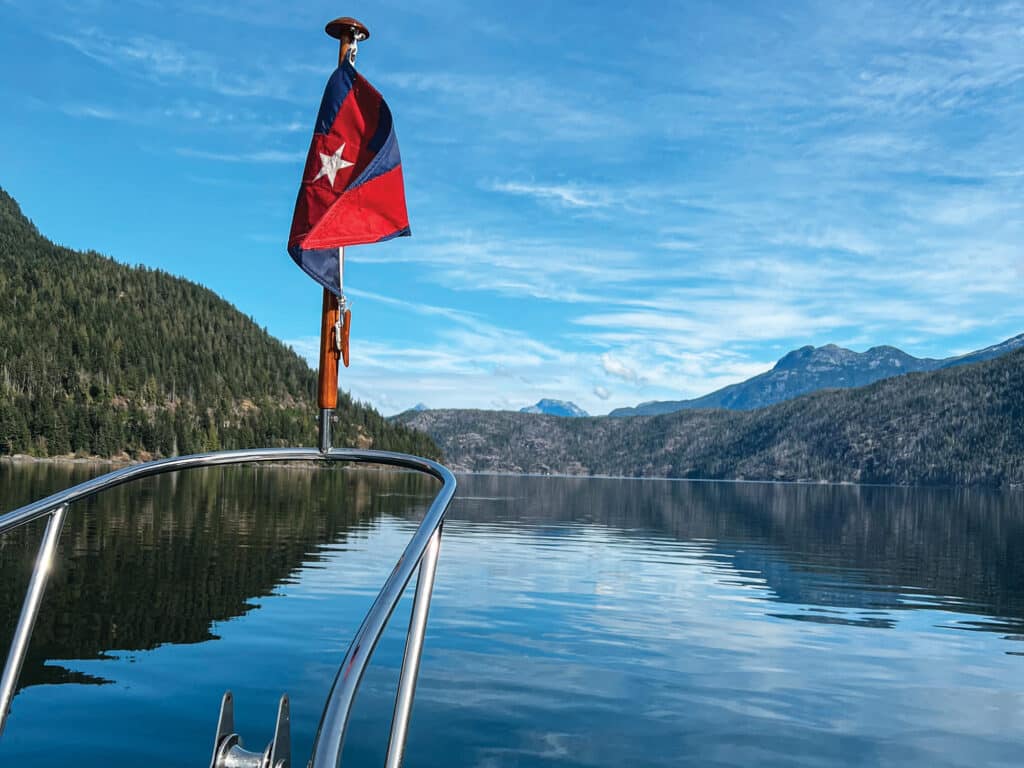
We also took comfort in our trawler’s solid hardtop and upper-deck chairs. I had to smile, remembering how, when I was 6 years old, I used to sit on the side of a small boat and marvel at the water gurgling alongside the hull. Here on Desolation Sound, I was still marveling at the water passing by. This instinct to appreciate the view has never left me, no matter whether I’ve been racing on the Irish Sea or from Rhode Island to Bermuda. I thought about my first sighting of the Antarctic peninsula with ice-covered peaks jutting into the sky, the surprising beauty of the Mediterranean, and the lush beauty of the Caribbean. The size of Chesapeake Bay is surprising, as are the endless destinations on the waters of New England.
I have enjoyed all of it. What a nice life we have, being on the water. A few days after our expedition on Desolation Sound, I started to wonder, What’s next?
CW editor-at-large and award-winning writer Gary Jobson is a Hall of Fame sailor.








